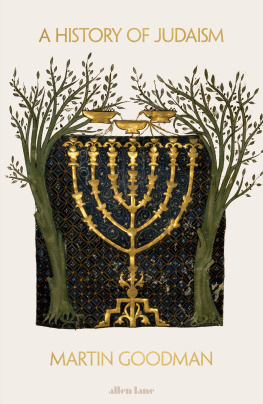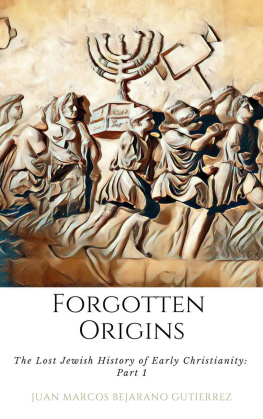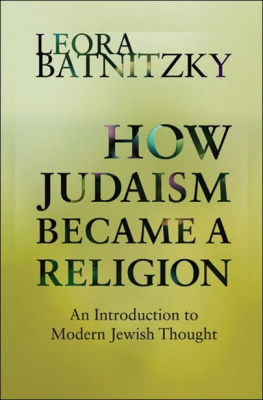Content

Bloom sbury T&T Clark
An imprint of Bloomsbury Publishing Plc
50 Bedford Square | 175 Fifth Avenue |
London | New York |
WC1B 3DP | NY 10010 |
UK | USA |
www.bloomsbury.com
First published in 2010 by the Continuum International Publishing Group Ltd
Reprinted by Bloomsbury Academic 2012
Lester L. Grabbe, 2010
All rights reserved.
No part of this publication may be reproduced or transmitted in any form or by any means, electronic or mechanical, including photocopying, recording, or any information storage or retrieval system, without prior permission in writing from the publishers.
Lester L. Grabbe has asserted his right under the Copyright, Designs and Patents Act, 1988, to be identified as Author of this work.
No responsibility for loss caused to any individual or organization acting on or refraining from action as a result of the material in this publication can be accepted by Bloomsbury or the author.
British Library Cataloguing-in-Publication Data
A catalogue record for this book is available from the British Library.
ISBN: | HB: | 978-0-567-05161-5 |
PB: | 978-0-567-55248-8 |
ePDF: | 978-0-5674-5501-7 |
ePub: | 978-0-5672-9666-5 |
Library of Congress Cataloging-in-Publication Data
A catalog record for this book is available from the Library of Congress.
Typeset by Newgen Imaging Systems Pvt Ltd, Chennai, India
To my students of early Judaism

CONTENTS
This book is an introduction to Judaism of the Second Temple period. That is, it covers the time beginning in the Persian period and ending with the fall of the temple (539 BCE70 CE), though I find it helpful to go as late as the Bar Kokhba revolt (13235 CE). I have already given a detailed history of the Judaism of the period in Judaism from Cyrus to Hadrian (1992) and the four-volume work, History of the Jews and Judaism in the Second Temple Period (vol. 1 [2004], vol. 2 [2008], and vols 34 [in preparation]), so what I am doing in this much briefer study is to try to introduce the beginner the student, the educated lay person, the non-specialist to the subject. As the title of the present book indicates, I focus on the first century BCE and CE. (It is the convention now among scholars of early Judaism to use the abbreviations CE and BCE when giving dates. They stand for Common Era [CE] and Before the Common Era [BCE], being equivalent to AD and BC.) However, I do not limit myself to those two centuries since a complete understanding of them requires a general knowledge of the preceding several centuries.
). Together they encompass most facets of Judaism of the time.
What will soon become clear to the reader is that the idea of orthodoxy or a state church is not a good way of looking at Judaism before 70. British readers need to put the model of the Church of England out of mind. There was a centre to the religion: worship at the Jerusalem temple. Most Jews accepted the sacredness of the temple and the general teachings of the Torah. But there was no official orthodoxy (in the Christian sense), for it is clear that there were many interpretations of the Torah and many different views about how to apply the law outside the temple (within the temple, the priests were in control). Thus, each of the tells us about one aspect of Judaism, but as will soon be apparent the various currents are not isolated entities. On the contrary, a single individual may have been a part of more than one current. A study of one particular current helps us to understand one aspect of Judaism, while the study of all four discussed here provides a quite comprehensive picture of Judaism albeit, a complex picture, like a mosaic with many different parts.
I quote widely from the original sources at different points, both to illustrate my points and to help the reader to become more aware of the source of our knowledge. I usually use the New Jewish Publication Society translation for quotations from the Hebrew Bible (Old Testament). Quotations from the New Testament and the Apocrypha are taken from the New Revised Standard Version. For Philo, Josephus, and the Greek and Roman writers I generally use the Loeb Classical Library. The Dead Sea Scrolls are usually quoted from the translation of Geza Vermes (see the end of are quoted from The Nag Hammadi Library in English.
This book originated in the Frankland and West Weekend School Lectures given at Birkbeck College on 2526 March 1995, and were originally published as An Introduction to First Century Judaism (1996). I thank Mr Michael Combermere and Dr Gwen Griffith Dickson for inviting and hosting me, and Professor Michael Knibb of Kings College, London, for suggesting my name and chairing the first two lectures. The present version has had a number of revisions, especially in from the point of view of the educated lay person. This book is very much the product of teaching early Judaism for many years, especially at the University of Hull but also in America and in various lectures in the UK. To those many students, who have been my willing (for the most part) guinea pigs, I dedicate this book.
L.L.G.
Kingston upon Hull
6 September 2009
| Nehemiah (445 BCE) | PERSIAN PERIOD (539331 BCE) |
| Alexander defeats Darius III (331 BCE) Death of Alexander (323 BCE) Period of the Diadochi (323281 BCE) | EARLY GREEK PERIOD (331301 BCE) |
| Ptolemy II (282246 BCE) | PTOLEMAIC RULE OF PALESTINE (301200 BCE) |
| Zenons tour of Palestine (259 BCE) |
| Activities of Joseph and Hyrcanus Tobiad (late 3rd century BCE) |
| Antiochus III (223187 BCE) | SELEUCID RULE OF PALESTINE (200140 BCE) |
| Antiochus IV (175164 BCE) |
| Maccabaean Revolt (168165 BCE) |
| Death of Judas (161 BCE) |
| Jonathan Maccabee (161143 BCE) | HASMONAEAN RULE (14063 BCE) |
| Simon Maccabee (143135 BCE) |
| John Hyrcanus I (135104 BCE) |
| Aristobulus I (104103 BCE) |
| Alexander Jannaeus (10376 BCE) |
| Alexandra Salome (7667 BCE) |
| Aristobulus II/Hyrcanus II (6763 BCE) |
| Pompey takes Jerusalem (63 BCE) | ROMAN RULE (63 BCE) |
| Herod the Great (404 BCE) |
| Archelaus (4 BCE 6 CE) |
| Roman province of Judaea (641 CE) |
| Agrippa I (4144 CE) |
| Roman province of Judaea (44 CE) |
| Fall of Jerusalem (70 CE) |
| Fall of Masada (73 CE) |
| Jewish revolts in Egypt and Mesopotamia (115117 CE) |
| Bar Kokhba revolt (132135 CE) |











